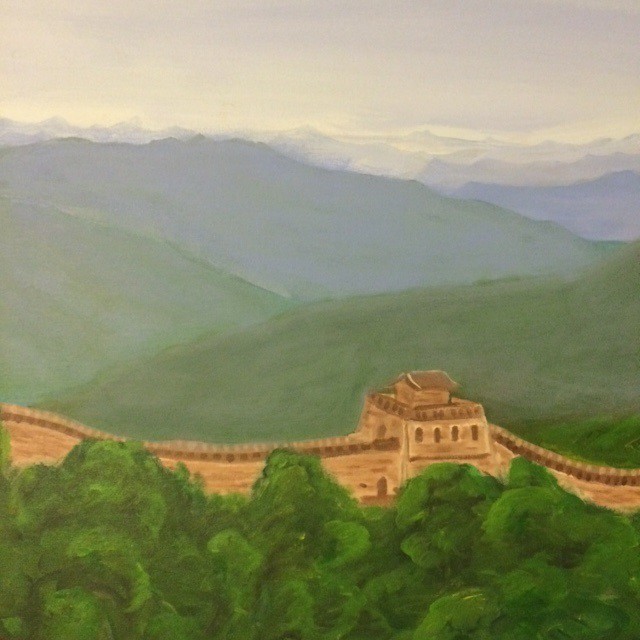November 20, 2015
Forging a Canada-China Trade Deal: Lessons from Australia
By Brian Gold
From First Published: Thursday, 11/12/2015 in The Hill Times

On Oct. 26, former Prime Minister Paul Martin said it would make “enormous sense” for a Trudeau-led Canada to pursue a trade deal with China, correctly noting that Canada has been lagging in developing free trade agreements with many countries, including China. Martin stated that Canada could pursue such a deal while maintaining its stance as an advocate for human rights.
The panda in the room
As a trading nation, Canada does need to pursue a free trade agreement with China, the soon-to-be largest economy in the world. However, in light of widespread suspicion of the Trans-Pacific Partnership, and anxiety that China as a superpower makes for an unequal economic partner, the public case for its necessity needs to be made. Along with human rights, pursuing such a deal must also be forged under the principles of consensus building and transparency.
A model for incorporating these principles is the soon-to-be ratified agreement between Australia and China (dubbed ChAFTA). A striking feature of this agreement is that China made significant concessions that favoured the Australian side.
To learn more, I recently spoke to Australia’s top independent policy analyst, Dr. Peter Drysdale. Dr. Drysdale is considered the intellectual father of the Asia-Pacific Economic Cooperation forum and the Trans-Pacific Partnership.
China is central to Canada’s economic future. At $11 trillion USD, China has the world’s second largest economy. Cebr, a leading global economic consultancy estimated that China will be the largest economy in the world within a decade. China is Canada’s second most important trading partner, with total trade valued at over $56 billion CAD. While this is presently less than 10 per cent of our trade with the US, the value of exports to China are increasing at an annual rate reaching 15 per cent, while exports to the US have been stagnant.
Australia is also an apt model for Canada as the leading export industries for both countries tend to be similar. The economies of both countries, for example, are heavily reliant on resource industries.
According to Australia’s Centre for International Economics, from 2016 to 2035 the extensive trade and investment liberalization provisions of ChAFTA will be central to a net present value cumulative increase of $22.9 billion in the Australian GDP. They also forecast a net positive increase in the number of Australian jobs and wages.
According to a recent study by the China Institute at the University of Alberta, Australian bilateral trade with China will rise by at least 15 per cent as a result of the agreement. The Canadian economy would enjoy the same growth in GDP, jobs and wages, and trade. By the same token, however, for as long as we delay a deal with China, the many similar Australian exports to China that compete directly with our exports will have a decisive competitive advantage.
Starting with PM Pierre Trudeau, Canada has been a Western leader in engaging China. This leadership faltered under Harper. Despite the 2014 Canada-China Foreign Investment Promotion and Protection Agreement, Harper chose not to start free trade negotiations.
ChAFTA’s most serious impediment was posed by the hyper-partisan political style of former Australian Prime Minister Tony Abbott. With a similar manner, Harper’s lack of transparency created the concerns many Canadians have regarding the TPP.
With Abbott gone, Australia has developed a spirit of consensus in regards to improving Asian trade. As Dr. Drysdale notes, this consensus prevails amongst organized labour, the Opposition Labour Party, and the ruling Liberal-National Parties. Polls consistently show the public support. Some concerns regarding the status of Australian workers are expected to be worked out amicably.
Dr. Drysdale further remarked that ChAFTA shows that China does not always get what it wants. Surprisingly, China accepted relatively small reductions on barriers to Chinese state-owned enterprises investment, in return for keeping protected politically sensitive agricultural sub-sectors of less potential for Australia. The Australian government agency for screening incoming foreign investment remains unchanged.
Furthermore, as a middle power democracy, ChAFTA gives Australia another lever to induce a one-party ruled super-power to abide by a consistent framework in its treatment of Australian goods and investment. A major goal of ChAFTA is to reduce what Dr. Drysdale calls the sometimes “ad hoc regulatory randomness” of the Chinese government.
Perhaps the most important lesson of ChAFTA for Canada is the transparent nature of its implementation. As Dr. Drysdale notes, it is a “platform for moving forward” to be reviewed in three years and with a built-in re-assessment mechanism. Affiliated with Australian National University, Dr. Drysdale and a Chinese counterpart are providing a publicly accessible review of the Australia-China relationship as it unfolds.
Echoing Mr. Martin’s statement, our new government must make a Canada–China Free Trade Agreement a top priority. Such an agreement will boost our economy, and solidify our relations with our second most important trade partner, soon the world’s largest economy. This process however does not have to be clouded with the concerns Canadians have regarding the TPP and with negotiating with a super-power. Australia’s experience provides a model, one that demonstrates both transparency, and real concessions from the Chinese, are possible.
It also demonstrates that the consensus building leadership style of our new prime minister will be critical for it to be accepted by, and a benefit for, all Canadians. It is time for Canada to regain its leadership in engagement with China, started 45 years ago under a previous Prime Minister Trudeau.
Dr. Gold teaches East Asian Studies at the University of Alberta and is the principal of Gold Strategy Group (goldstrategy.ca). He has decades of Asia-focused management consultancy experience. He was also the federal Liberal candidate for Edmonton Griesbach in the Oct. 19 election



